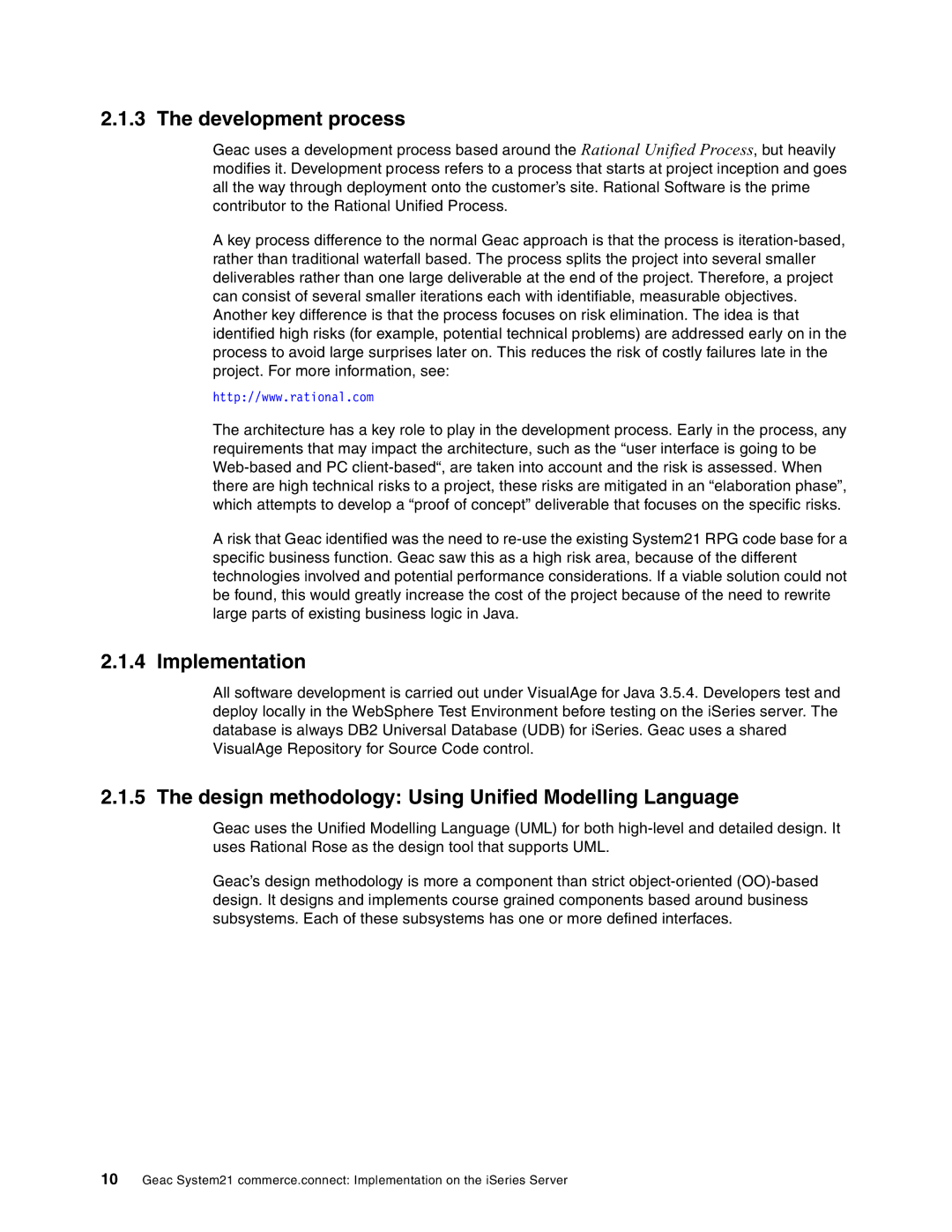2.1.3 The development process
Geac uses a development process based around the Rational Unified Process, but heavily modifies it. Development process refers to a process that starts at project inception and goes all the way through deployment onto the customer’s site. Rational Software is the prime contributor to the Rational Unified Process.
A key process difference to the normal Geac approach is that the process is
http://www.rational.com
The architecture has a key role to play in the development process. Early in the process, any requirements that may impact the architecture, such as the “user interface is going to be
A risk that Geac identified was the need to
2.1.4 Implementation
All software development is carried out under VisualAge for Java 3.5.4. Developers test and deploy locally in the WebSphere Test Environment before testing on the iSeries server. The database is always DB2 Universal Database (UDB) for iSeries. Geac uses a shared VisualAge Repository for Source Code control.
2.1.5 The design methodology: Using Unified Modelling Language
Geac uses the Unified Modelling Language (UML) for both
Geac’s design methodology is more a component than strict
10Geac System21 commerce.connect: Implementation on the iSeries Server
